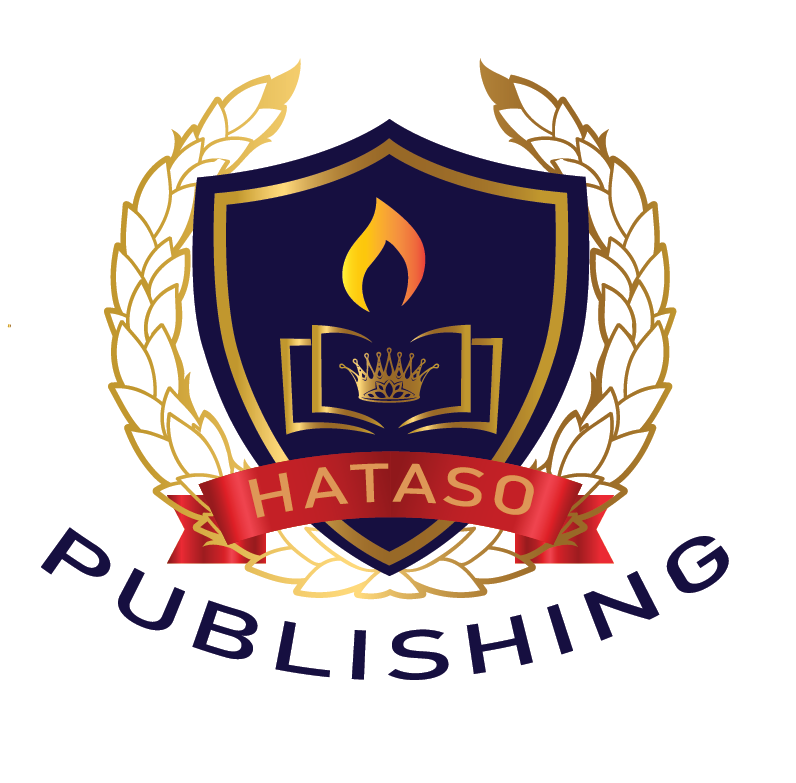


10.18639/RABM.2025.9800047
Short Communication
Oct 25, 2025
Not applicable
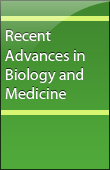
10.18639/RABM.2025.9800046
Original Research Article
Aug 27, 2025
PLWHIV in Northeast Nigeria were investigated for the prevalence of infection and to identify risk factors associated with HPgV infection, given the potential impact of HPgV on HIV disease progression. In Northeast Nigeria, we conducted a cross-sectional study of 249 PLWHIV. We used bivariate and multivariate logistic regression models to assess the association between HPgV infection and sociodemographic characteristics, risk behaviors, and healthcare access. 23.3% of the study population had HPgV infection. In the multivariate analysis, inhaled drug use was associated with HPgV infection. In Northeast Nigeria, there is a concerning prevalence of HPgV infection among PLWHIV. A potential transmission route beyond traditional routes is suggested by the identification of inhaled drug use as a risk factor. To address this significant public health concern, targeted interventions and harm reduction strategies are necessary.
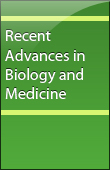
10.18639/RABM.2025.9800045
Original Research Article
Aug 12, 2025
There is a lack of research on low-risk HPV infections like genital warts among vulnerable women, especially their HIV serology, because research focuses on high-risk strains of HPV associated with cervical cancer. The interplay between genital warts, HIV status, and sociocultural factors is crucial to understanding targeted prevention to alleviate the burden of genital warts in vulnerable populations. In this study, we investigate the prevalence and risk factors of genital warts among women with HIV serostatus. Women seeking gynecological consultation at a public hospital in Nigeria were studied cross-sectionally. A survey and medical records were used to collect data, which was then analyzed using SPSS 18.0. The majority of the women who had genital warts (63.33%) were HIV positive. For the first time, 67% of these women sought gynecological consultations for genital warts. Women with HIV were more likely to experience papule genital warts, while women without HIV were more likely to experience acuminate warts. Moreover, HIV-positive women with multiple sexual partners were found to have an increased risk of developing genital warts. Self-medication (75%) and traditional medicine (85%) were also prevalent. Healthcare-seeking behavior must be enhanced, early detection and treatment must be facilitated, and HIV and genital warts must be alleviated by addressing socio-cultural barriers. Traditional medicine should be integrated into healthcare systems, and efforts to raise awareness should be prioritized.
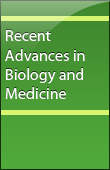
10.18639/RABM.2025.9800044
Original Research Article
Jun 02, 2025
This paper explores the growth of biological medicine in the South African pharmaceutical sector for the period 2019 to 2023. The study analysis revenue trends over time and investigates challenges experienced and suggests possible solutions. Results show that small-molecules and biologicals follow a similar pattern with a major peak in 2021 and a decline thereafter, with total revenue for small molecules much higher than for biologicals over these years. Biologicals generally had growth through 2021, then experienced a significant decline in sales and growth in the following years. To promote the growth of biological medicines in South Africa, it is vital to streamline regulatory frameworks for quicker approval of biologicals and biosimilars while ensuring safety and efficacy. Implementing affordable pricing strategies and fostering collaboration between public entities, pharmaceutical companies, and insurers will enhance reimbursement policies. Additionally, increasing educational initiatives for healthcare providers will improve awareness and prescribing practices. Investing in local manufacturing can reduce costs and create jobs, while raising awareness of biosimilars as cost-effective alternatives will further boost their adoption and accessibility.
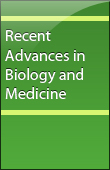
10.18639/RABM.2025.9800043
Conference Proceedings
Feb 27, 2025
Proceedings of the National Conference on “Advances in Biological Sciences: Molecules to Organisms", organized by the Department of Zoology, AMU, Aligarh, India, from December 28 to 29, 2024.
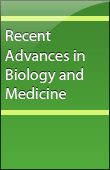
10.18639/RABM.2025.9800042
Original Research Article
Feb 15, 2025
This study investigated the enzymatic activities of proteases, DNases, and hemolysins across five clinically relevant bacterial strains: Among the various bacterial species in the contaminated foods and drinks, the most common are – E. coli, S. aureus, P. aeruginosa, S. pyogenes, and B. cereus. Protease activity was analyzed using casein solution to evaluate the relative optical density, while DNase activity was determined on DNase agar plates, observing the clear zones on the agar media, and hemolysin activity was checked on blood agar plates. The contention here is that the mean diameter of clear zones was determined for die strains and we prevailed to analyze the differences in die enzymatic activities. Our findings also highlighted differences in the bacterial strains studied with regard to a number of factors including protease, DNase and haemolytic activity: P. aeruginosa displayed the highest protease activity while S. aureus and B. cereus were observed to have high DNase activity while S. pyogenes displayed the highest haemolytic activity. The protease and DNase parameters were further analyzed by means of correlation coefficients, and the results revealed a linear correlation between the two at +0.983; however, the hemolysin activity was not directly related to either protease or DNase. Altogether the current observations offer perspectives regarding the numerous strategies that bacteria have adapted in infecting host tissues and producing damage, as well as the significance of studying enzymatic processes in an effort to develop specific pharmacological treatments.
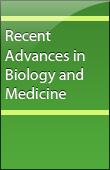
10.18639/RABM.2025.9800041
Original Research Article
Jan 02, 2025
In recent times, especially during the antibiotic resistance era, it is crucial to find active and sustainable alternatives that work against microbes. In this study, seven plants Minuartia nifensis McNeill, Sideritis sipylea Boiss, Asperula daphneola O.Schwarz, Teucrium montanum L, Stachys cretica L. subsp, Smyrnaea rech. Fil and Euphorbia erythrodon Boiss/Heldr growing in Turkey were collected and newly registered. Alcoholic extracts were prepared to investigate their antimicrobial and antioxidant activity. These plants are widespread in the mountains of Izmir City (Turkey). Three assessments were performed in this project: agar well diffusion method, a standard antimicrobial (antibacterial and anti-fungal) activity test, followed by MIC test, which determines the lowest concentration and lowest quantity that affects microbes after adding resazurin indicator, and finally, antioxidant activity by ELISA microplate reader. The findings showed activity against S. aureus and E. colį. Antifungal activity against C. albįcans and C. glabrata was the highest activity shown by most extracts. Antioxidant activity was also confirmed by quantification of radical scavenging activity via DPPH assay.
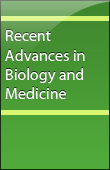
10.18639/RABM.2024.9800040
Short Communication
May 07, 2024
The purpose of this work is to summarize the biological methods available for assessing DNA damage in humans at present. There are several methods for determining single-strand DNA breaks, alkali-labile sites, and crosslinks, including comet assays, micronucleus assays, cytogenetics (which include sister chromatid exchange and chromosomal aberration assays), DNA repair assays, oxidative DNA damage assays (measuring oxidized bases such as 8-oxo-7, 8-dihydro-2'-deoxyguanosine), and oxidized bases. There are many factors to consider when determining the best method, including how to achieve the study's objectives, what type of DNA damage to measure, and what resources are available. Combining different techniques may also contribute to a more comprehensive understanding of DNA damage and its effects on human health. By standardizing assays and advancing technology, we will be able to determine DNA damage in humans more accurately.
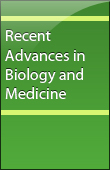
10.18639/RABM.2024.9800039
Original Research Article
Jan 25, 2024
Diclofenac is a non-steroidal anti-inflammatory drug commonly used in the treatment of pain and inflammatory conditions in the tropics. Its easy accessibility without prescription has made it a commonly abused medication. The abuse has recently become worrisome as young adults in Nigeria have been observed to use diclofenac and alcohol for non-medical purposes concomitantly. This study was undertaken to study the nephrotoxic effect associated with the combined use of alcohol and diclofenac using an animal model and the protective effect of Vitis vinifera (Grape) seed and Carica papaya (pawpaw) seed. Adult albino rats were divided randomly into groups of six rats each, and each group was treated for 90 days with 5% or 45% alcohol with 2mg/kg diclofenac or 10mg/kg diclofenac, and some rats were treated with grape seed and/or pawpaw seed concomitantly. Diclofenac and 45% alcohol combination induced nephrotoxicity in rats and oxidative stress characterized by elevated serum urea and creatinine, increased malondialdehyde and decrease in reduced glutathione, catalase and superoxide dismutase in kidney homogenate, as well as moderate interstitial congestion and hemorrhage in rat kidney histology section stained with Haematoxylin and Eosin, which was significantly ameliorated by the grape seed and pawpaw seed. There was a 1.32% increase in relative kidney weight in comparison with control rats. The severity of the nephrotoxicity observed with the diclofenac-alcohol combination makes it a very unsafe practice. There is a need to explore the nephroprotective benefits of Vitis vinifera seed and Carica papaya seed for maximum benefit to man.
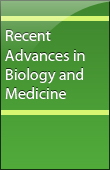
10.18639/RABM.2023.9800038
Agriculture and Allied Sciences
Dec 30, 2023
A significant part of Indian food production involves fisheries and aquaculture, which contribute to agricultural exports and employ around fourteen million people. Since independence, the nation has consistently increased fish production as a result of its vast aquatic resources. A total of 6.3 percent of world fish production comes from the industry, which contributes 1.1 percent to GDP and 5.15 percent to agricultural GDP. A total of 10.07 million metric tons of fish are produced in the inland sector, and around 65 percent are produced in the cultural sector. Increasing fish diseases have slowed aquaculture production and product trade in India, threatening fishermen's livelihoods. Infections can be caused by a number of factors, including low physicochemical and microbiological quality of culture water, high stocking density, and poor nutrition. It is possible for seed fish and adults to become deformed and die from exposure to pollution and suspended particles. As a result of different opportunistic bacterial infections and parasites, the fish industry suffers a significant loss in mortality and morbidity, decreased growth, and increased chemical control and prevention costs.
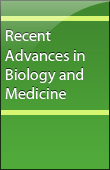
10.18639/RABM.2023.9800037
Agriculture and Allied Sciences
Dec 21, 2023
Food production through aquaculture is one of the fastest-growing industries in the world. World aquaculture production is dominated by low-income food-deficit countries, which account for the majority of production. There is a great deal of expectation that aquaculture will contribute to the world's aquatic food production, and there is also hope that aquaculture will continue to grow in the future as a result of stagnant yields from many capture fisheries and increasing demand for fish and fishery products. In contrast, aquaculture is widely recognized as encompassing a wide range of different types of aquatic farming practices, such as seaweed farming, mollusk farming, crustacean farming, fish farming, and other aquatic species. Using different resource use patterns, there is a wide range of options for diversification, such as seaweed farming, mollusk farming, crustacean farming, and fish farming. Currently, aquaculture produces nearly a third of the world's edible fish supplies, and its contribution to marine food sources will only grow. As a sustainable alternative to catch fisheries, aquaculture has the potential to feed the world's rising population. Globally, aquaculture is the fastest-growing sector of the food industry, growing at a rate of more than 10% per year and accounting for more than 30% of all fish consumed. In regards to long-term sustainability, aquaculture faces the same issues as all other food production methods.
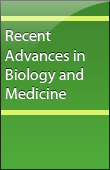
10.18639/RABM.2023.9800035
Agriculture and Allied Sciences
Oct 27, 2023
Not applicable
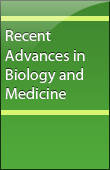
10.18639/RABM.2023.9800036
Agriculture and Allied Sciences
Oct 25, 2023
With the growth of the global economy, aquaculture has become increasingly important. Aquaculture faces the greatest challenge from infectious diseases, as they cause billions of dollars in economic losses every year. Using scientifically proven technologies is the key to reducing these impacts. By applying this knowledge to develop novel diagnostic techniques (molecular diagnostics, biosensors, spectroscopy and nanoparticles) and therapeutic agents (vaccines, gene silencing methods, etc.), advances in science are leading to an improved understanding of infectious diseases. Here, we are going to discuss some current diagnostic methods, preventive measures, and therapeutics used to control infectious diseases in aquaculture.
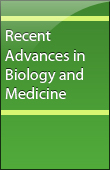
10.18639/RABM.2023.9800034
Cancer and Oncology
Jul 31, 2023
Not applicable.

10.18639/RABM.2023.9800033
Agriculture and Allied Sciences
Jun 28, 2023
Commercial ripening is an essential part of fruit business, as ripe fruits are not suitable for long storage due to their fast-decaying nature. Therefore, fruit traders pick unripe fruits and distribute early, thereafter different methodologies are used to fasten the ripening process of fruits. The present study is aimed at investigating the efficacy of the use of banana peel as a ripening agent for its fruit. Ripe banana peel and unripe banana were obtained from Anyigba market in Kogi state, Nigeria. The peels were weighed (25g, 50g, and 100g) and subsequently bagged with 5 unripe bananas (about 118g each), including control (without banana peel), all in triplicates and stored in a dark cupboard for a period of 96 hours. One banana from each replicate was assessed for sugar content and texture as ripening parameters after every 48 hours. The results revealed that the bananas within treatment groups were riper with significantly (p < 0.05) higher sugar content (117.70 ± 5.67, 119.59 ± 14.44 and 104.98 ± 14.26 mm/dL at 25g, 50g and 100g respectively) than the control (35.90 ± 12.90a mm/dL). Also, banana fruits treated with banana peels were significantly lower in texture (4.25 ± 0.55b, 5.65 ± 1.15b and 4.50 ± 0.10b cm at 25g, 50g and 100g respectively) than the control (10.65 ± 0.15a cm). From the study it can be concluded that, banana peels hastened the ripening process of banana and may be possibly exploited by local farmers as a cheaper and eco-friendlier method of ripening bananas.